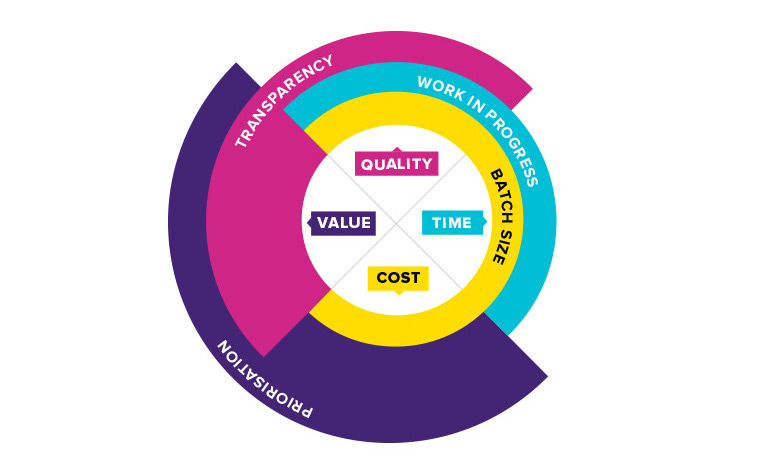By Nick Butler
Tags: Agile

Nobody wants their software development project to fail, but it happens all the time. This Agile risk management checklist lets you assess how well you currently manage risk. And it helps you identify steps you can take to reduce risk in the future. Improve your risk management today and deliver more successful projects tomorrow.
In this post, you’ll learn:
The checklist is part of my Agile risk management guide. The Guide shares the secrets to reducing risk and delivering successful software development projects with Agile.
If you’re not using Agile project management techniques yet, the Guide will explain why you should. And, if completing the checklist shows that you have areas you can improve, check out the Guide to learn how.
Check how well you currently manage risk and discover how you can improve.
Software development projects face four main risks. These are risks you’ll fail to deliver:
Agile software development has a number of techniques to reduce these four risks. The most powerful of these approaches are:
Combining these gives you a model for Agile project risk management. The model below shows how different Agile approaches mitigate different risks. Each approach mainly affects one of the areas identified, as well as influencing the other areas.

The checklist identifies key Agile practices that increase the chance that your projects will succeed. It asks you nine questions about each of the four key techniques for cutting risk.
Your first step is to complete the checklist.
Next, list all the practices you’re not doing yet — the questions you answered ‘no’ to — under the relevant heading: prioritisation, transparency, work in progress, batch size.
Unsurprisingly, the best way to use the Agile risk management checklist is through Agile risk management techniques. You want to use an Agile approach to improving your risk management. In other words, you need to prioritise the work, make it transparent, limit the size of the batches you work in, and reduce your work in progress.
By treating this work as a project, you get to practice Agile risk management as you go.
Work out which of the practices will give the greatest gain for the smallest effort. Here are two ways you could do this:
The heading with the longest list is the area of your greatest deficit. So it’s likely that any improvements you make in that area will have big benefits.
Tackling the easiest ones first will see you deliver benefits sooner.
Reduce software development risk with Agile prioritisation
Write out each practice you want to implement and put them up on a board that the whole team can see. Pull the high priority ones to the top. Then start implementing these practices, tracking your progress on the board.
Use Agile transparency to reduce project risk
Start with the smallest job — the practice that will be easiest to implement. Avoid the temptation to pull together a number of related practices and implement them in one go. That’s a bigger batch and increases the risk you’ll not complete it.
Manage project risk by limiting work in progress
Make sure you’ve completed each one before you move onto the next. That’s because the more work you have on the go, the less productive you’re likely to be.
How to reduce batch size in Agile software development
Once you’ve completed the checklist, you’ll have a better idea how robust your risk management process are.
If you’ve got lots of work to do, don’t be discouraged. Any improvements you make can have a big impact. And if you turn this work into a project in its own right, you’ll be able to practice the Agile approach as you go.
If you’re already doing well, you’re probably also seeing the results. And you probably already know the benefits of continuing to inspect and improve your practice. Keep up the good work.
| Guidance | Case studies & resources |
|---|---|
| Introduction to project risk management with Agile | Agile risk management checklist — check and tune your practice |
| Effective prioritisation | |
| Reduce software development risk with Agile prioritisation | Reducing risk with Agile prioritisation: IntuitionHQ case study |
| Increasing transparency | |
| How Agile transparency reduces project risk | Risk transparency: Smells, Meteors & Upgrades Board case study |
| Reducing batch size | |
| Manage project risk by limiting work in progress | Reducing WIP to limit risk: Blocked stories case study |
| Limiting work in progress | |
| How to reduce batch size in Agile software development | Reducing batch size to manage risk: Story splitting case study |